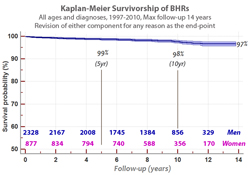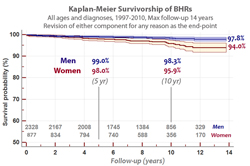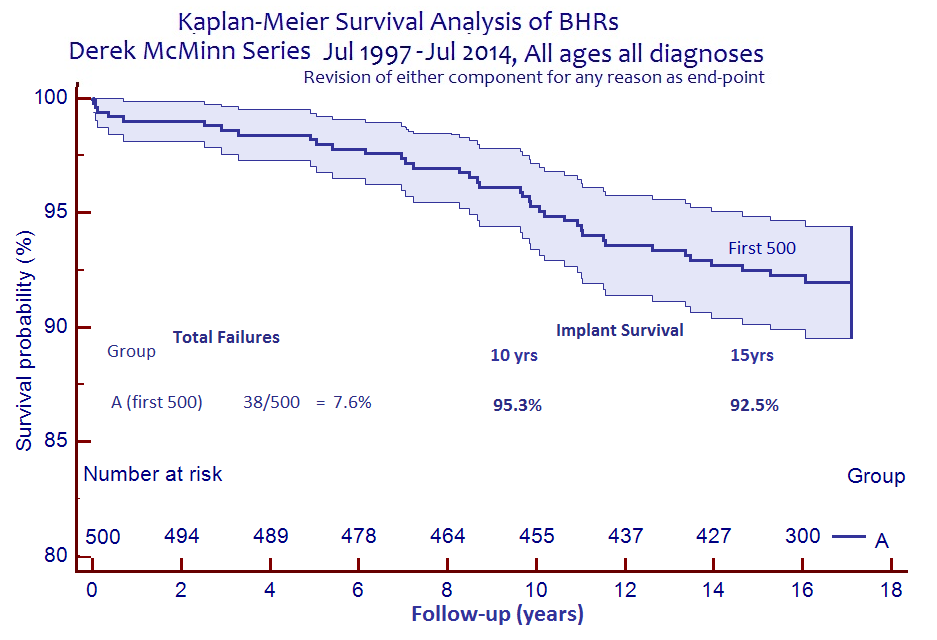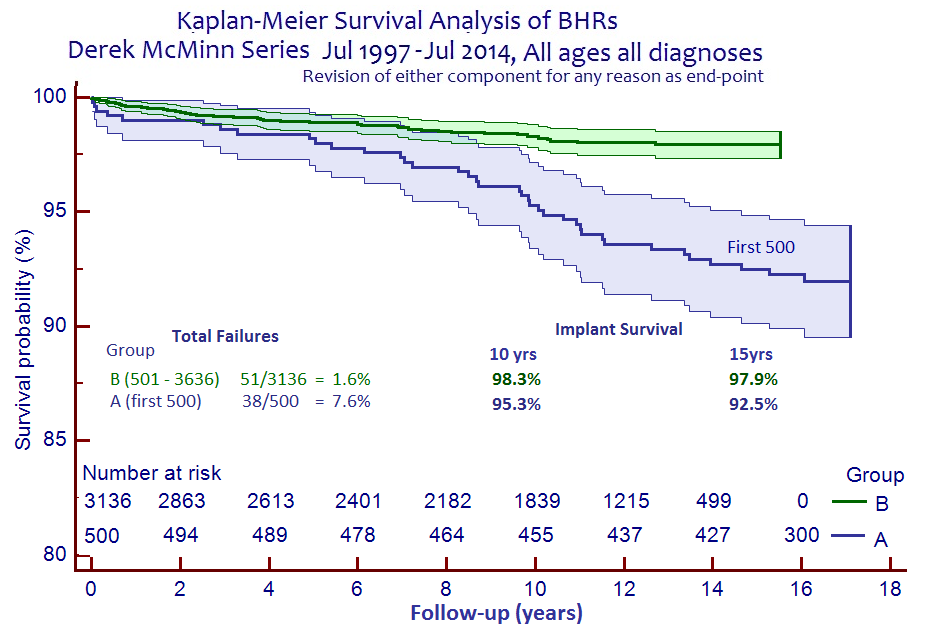|
Mr McMinn has performed 3205 Birmingham Hip Resurfacings (BHRs) between July 1997 and December 2010. These include 2328 men and 877 women; the average age at operation was 53 years.
Of these 3205 BHRs, 70 have been revised to a total hip replacement at various stages of follow-up. Reasons for revision include fracture through the femoral neck and collapse of the femoral head. Following their revision surgery, these patients are functioning well.
70 revisions out of 3205 BHRs gives a failure rate of 2.2%. If all these 3205 were to reach 14 years follow-up, the failure rate is predicted to be 3% (97% success rate) as shown in survivorship graph A below.
If we break these figures into results for male and female patients, there have been 35 revisions in men and 35 revisions in women. If all 2328 men and 877 women were to reach 14 years follow-up, the failure rate is predicted to be 2.2% (97.8% success rate) and 6% (94% success rate) respectively as shown in survivorship graph B below.
Click on the thumbnails for enlarged view
A.
 |
B.
 |
* * *
Between 1991 and 1997, Mr McMinn carried out approximately five hundred metal-on-metal resurfacings and The McMinn Centre has reported on these cases in the past in the following publications:
Metal on Metal Surface Replacement of the Hip
McMinn DJW, Treacy RBC, Lin K, Pynsent P
Clinical Orthopaedics & Related Research – 1996; Volume 329, pp S89-S98
Ten-year results of a double-heat-treated metal-on-metal hip resurfacing
Daniel J, Ziaee H, Kamali A, Pradhan C, Band T, McMinn DJW.
J Bone Joint Surg [Br] 2010;92(1):20-7
From 1997, Mr McMinn carried out the first 500 Birmingham Hip Resurfacings (BHRs). The blue line on graph C below shows a 92.5% implant survival at seventeen years for Mr McMinn’s first 500 Birmingham Hip Resurfacings. Incorporating the previous 500 metal-on-metal resurfacings undertaken between 1991 and 1997, the blue line is effectively the result of a total of one thousand Hip Resurfacings.
The green line in graph D below shows the results of an additional 3136 procedures carried out by Mr McMinn up to July 2014. The implant survival of these procedures is significantly better at 97.9%, a five percent improvement in results at fifteen years. This shows that there is a clear learning curve for Hip Resurfacings and that learning curve is one thousand cases.
Click on the thumbnails for enlarged view
C.
 |
D.
 |
|